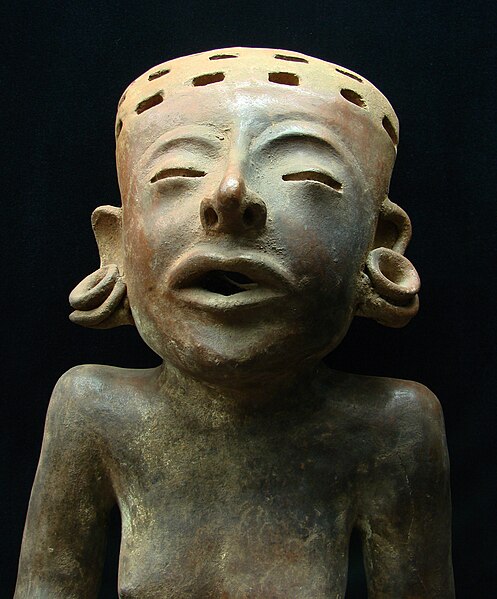The Danza de los Voladores, or Palo Volador, is an ancient Mesoamerican ceremony/ritual still performed today, albeit in modified form, in isolated pockets in Mexico. It is believed to have originated with the Nahua, Huastec and Otomi peoples in central Mexico, and then spread throughout most of Mesoamerica. The ritual consists of dance and the climbing of a 30-meter pole from which four of the five participants then launch themselves tied with ropes to descend to the ground. The fifth remains on top of the pole, dancing and playing a flute and drum. According to one myth, the ritual was created to ask the gods to end a severe drought. Although the ritual did not originate with the Totonac people, today it is strongly associated with them, especially those in and around Papantla in the Mexican state of Veracruz. The ceremony was named an Intangible cultural heritage by UNESCO in order to help the ritual survive and thrive in the modern world. The Aztecs believed that Danza de los Voladores was the symbol of their culture.

Flying Men starting their dance, Teotihuacan
Totonacs of Papantla, Veracruz performing the "voladores" ritual
Mexican Indian wedding and voladores, ca. 1690
Voladores ca. 1836, by Carl Nebel
The Totonac are an indigenous people of Mexico who reside in the states of Veracruz, Puebla, and Hidalgo. They are one of the possible builders of the pre-Columbian city of El Tajín, and further maintained quarters in Teotihuacán. Until the mid-19th century they were the world's main producers of vanilla.
Totonacs of Papantla, Veracruz performing the "voladores" ritual
View of the main square of the ruins of the city of Cempoala, capital Totonac Nation, the first to establish a military alliance with the Castilian armies to attack the dominions of Aztec Triple Alliance or Ēxcān Tlahtolōyān.
A ceramic Totonac statuette






